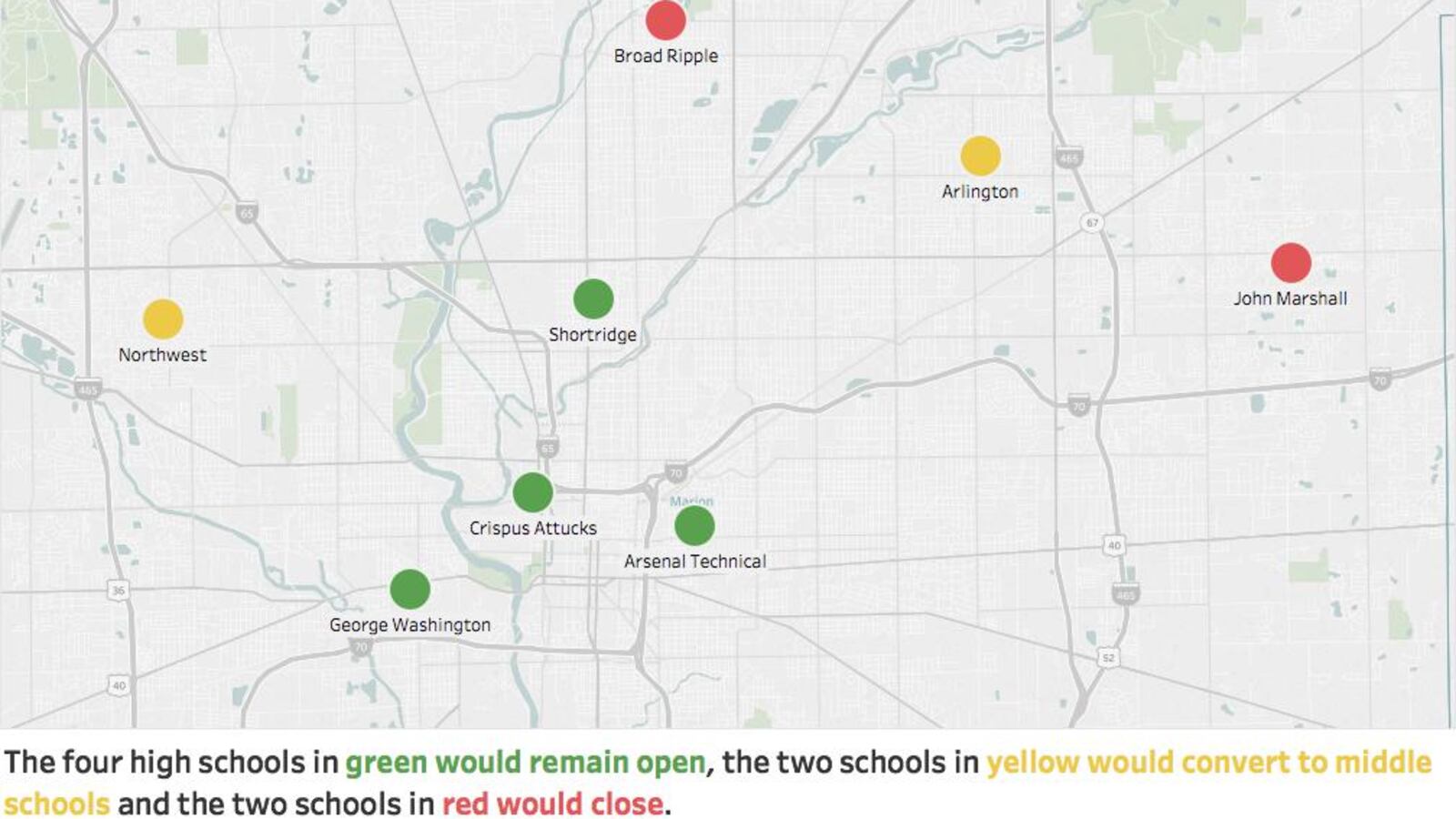Students and staff at four Indianapolis Public Schools will know their fate by Monday’s end — when the board votes on a plan to close and reconfigure high schools.
The proposal from the administration calls for closing Broad Ripple High School and John Marshall Middle School as well as converting Northwest and Arlington High School campuses to middle schools.
If the plan is approved, the district will keep open four high school campuses near the center of the district — Shortridge, Crispus Attucks, George Washington and Arsenal Technical high schools. They will all offer magnet programs in fields such as health sciences, the arts and the military. Students will be expected to choose a high school based on the focus area, rather than the location.
The board will meet at 6 p.m. Monday at the IPS central office, 120 E. Walnut St.
Here are some of the essential facts ahead of the vote:
1. It’s not over until the school board votes.
Superintendent Lewis Ferebee’s administration produced the high school closing plan at the urging of the board. But while several board members have been clear that high schools must close, there have been some murmurs of discontent with the proposal’s details.
Board member Venita Moore, for example, wrote in the Indianapolis Recorder that she is concerned that the plan only keeps campuses near the core of the district, taking resources from the communities on its periphery.
Ultimately, it’s the school board that will make the final decision and board members could approve pieces of the plan or reject it altogether.
2. The district has about a quarter of the high schoolers it once educated.
At its peak in the late 1960s, IPS educated about 26,000 high school students. In the decades since, the district has lost students as families left for the suburbs or opted to send their children to private or charter schools. Now, high schools enroll a total of about 5,000 students, according to district data. For comparison, Carmel High School has nearly as many students in a single building.
Despite decades of shrinking enrollment, the district has kept most of its high schools open. As a result, they are vastly underutilized with more than twice as many seats as students, according to a district report.
All those empty seats can drive up costs in schools, as the district pays for services such as air conditioning and maintenance.
3. The research on whether closing schools helps or hurts students is mixed.
Parents and community members have raised many concerns over the high school closing plan, including fears that combining schools will push students to drop out, trigger violence among students and lead to long bus rides.
But when Chalkbeat looked at the research on school closings earlier this year, we found mixed results. In some communities, closing schools has had negative impacts. In Milwaukee and Baton Rouge, Louisiana, students were less likely to graduate when their high schools closed. But in other places, it has been positive for students. In New Orleans, for example, students had higher graduation rates after they moved to new high schools. And in New York, researchers found that when several high schools closed, graduation rates stayed stable for current students and future students had higher attendance and graduation rates.
“In short, the key to making closures and takeovers work is to ensure that directly affected students end up in better schools after the intervention,” wrote the authors of a paper on New Orleans and Baton Rouge.
4. There were other options.
The district is faced with two serious problems: They have far more high school seats than students to fill them and many of their schools are chronically underperforming. Ferebee’s administration is betting that they can tackle both problems by consolidating high schools so campuses can offer students more specialized options. Because the administration chose an all magnet system, they also chose to keep schools in the center of the city, where it will be easier to bus students from across the district.
But it’s not the only vision they could’ve pursued. The plan calls for keeping the Arlington and Northwest campuses open as middle schools and filling extra space with district administrators and special programs. Those same steps could’ve helped keep the buildings open as high schools. The district could’ve chosen to embrace its small high schools, refashioning campuses with that in mind and sharing buildings with other organizations.
Now, the question is whether the IPS Board likes the vision for high schools proposed by the administration.

